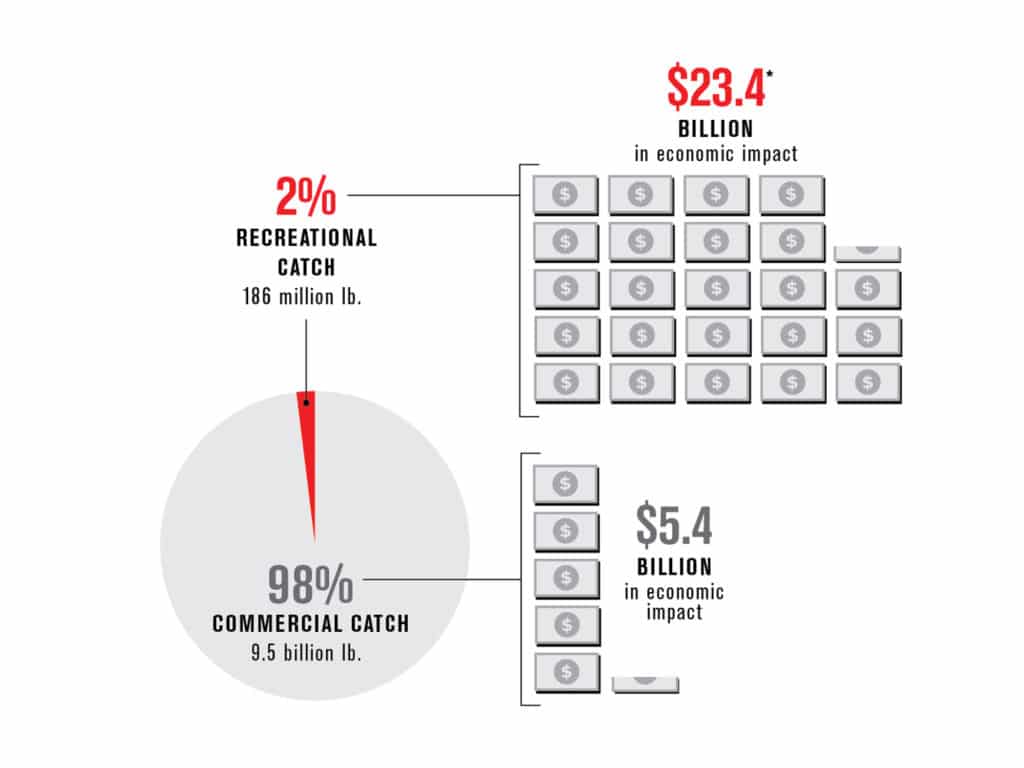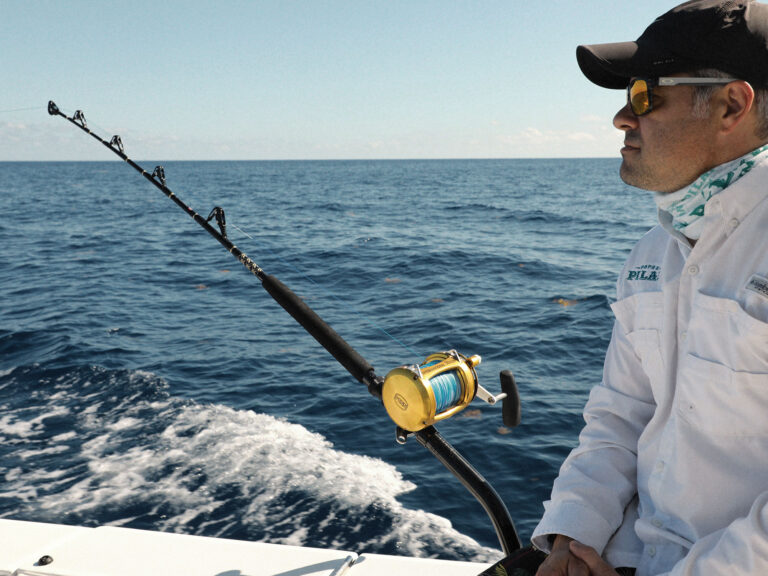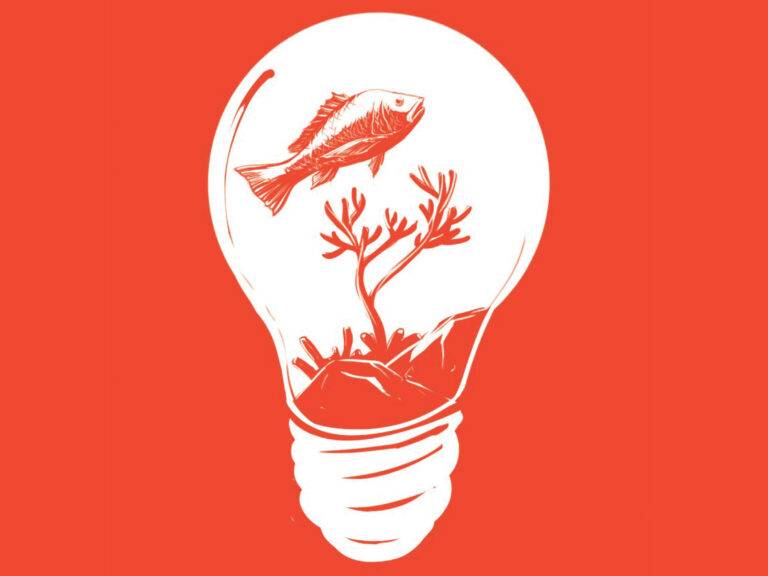
Every year, NOAA Fisheries releases its annual report to the nation on the value of U.S. fish landings. This year was no different from the previous ones. All the successes are touted in bold type, and the not so good information is buried a little deeper in the report. Who can blame folks for using Marketing 101 techniques? Opening on a positive tone sets the theme for the whole report. As in the past, one of the biggest pieces of news is which port landed the greatest value of fish product and which port landed the most fish. The ports are the same year after year. New Bedford, Massachusetts, has the highest dollar value, primarily due to the landings of scallops, and Dutch Harbor, Alaska, is the high-volume producer, primarily due to the landings of incredible amounts of Pacific walleye pollock. We are talking about billions of pounds. I don’t have a problem with any of this. I know that the scallop fishery is a management success story due to the concept of controlled access and semiquota shares. I believe that the Pacific walleye pollock fishery is also well- managed. All great stuff and serving a national need.
Commercial Successes
I bring all this up because it points out what I think is an ongoing problem that is somehow continually missed by NOAA Fisheries. On the email press release sent out to tout the success of sustainable fisheries management, the commercial industry highlights read: U.S. commercial fishermen landed 9.5 billion pounds of seafood valued at $5.4 billion in 2014. There were strong landings of 3.1 billion pounds for the nation’s largest commercial fishery, walleye pollock, valued at $400 million. Dutch Harbor, Alaska, and New Bedford, Massachusetts, continue to dominate the list of top ports driven by landings of pollock for Alaska and sea scallops in Massachusetts. U.S. marine and freshwater aquaculture production was valued at $1.4 billion, about one-quarter the value of the nation’s commercial wild catch. The top five highest-value commercial species categories were crabs ($686 million), shrimp ($681 million), lobster ($625 million), salmon ($617 million) and scallops ($428 million). Some pretty impressive numbers, right? These highlights were followed by the highlights for the recreational fishery — 10.4 million anglers took 68 million trips in 2014. These recreational anglers caught 392 million fish, and released 60 percent of those caught. The total harvest was estimated at 155 million fish weighing 186 million pounds. (Someone is landing a lot of small fish!) The top five U.S. species ranked by pounds landed were striped bass, bluefish, yellowfin tuna, mahimahi and summer flounder.
Recs Ignored
Do you see any difference other than the fact that the recreational fishery lands less than 3 percent of the total finfish landings of the nation? I’ll give you a hint: For the recreational fishery there are no dollar signs. However, the recreational fishery far surpasses the commercial fishery in dollar value of finfish landed. Well, I thought I was just being too picky and that if I dug into the report, I would find the value of the recreational fishery. Of course, I also realize that the average reader will never go deeper than the press release. So I did the digging for them and found that they might as well stay on the opening page. Nada, zilch, nyet! In plain English, there is no economic information for the recreational fishery in the report. If one digs deep enough on the NOAA Fisheries site, one will find a study of the independent bait and tackle shops’ economic impact in 2013. This came out to be an economic contribution of $2.3 billion. However, this just measured a subset of the overall tackle industry. Going back a little further, NOAA Fisheries did produce an overall economic valuation of the recreational fishing industry in 2011. This study showed an economic value of $23.4 billion. In the words of the late Senator Everett Dirksen, “A billion here, a billion there, and pretty soon you are talking about real money.” Well, $23.4 billion is real money and happens to be many times the value stated for the commercial industry. If it were recalculated in 2015 dollars, it would be even more.

Turn a Blind Eye
So, here we have a branch of the Department of Commerce that knows every economic detail about one of its constituencies and barely says “boo” about the economic value to the nation of a much larger constituency. What am I missing? The reason for managing fisheries, as outlined in the Magnuson-Stevens Act, is to maximize the value to the nation of our resources. Using NOAA Fisheries’ own slightly outdated statistics, the recreational fishery creates many times the economic impact of the commercial, and does so with approximately 3 percent of the finfish resource — yet recreational fishing gets absolutely no economic impact coverage in the Fisheries of the U.S. Report for 2014. Hmm!









